PRAN vs. PRAH: The PENETRON Difference
Looking at the ACI 212.3R-10 Report on Chemical Admixtures for Concrete
The “Report on Chemical Admixtures for Concrete” published by the American Concrete Institute (ACI 212.3R-10 / January 2011) includes a chapter on permeability-reducing admixtures (PRAs). These PRAs (permeability reducing admixtures) include a wide range of admixtures than can be used to reduce permeability in concrete. More specifically, it describes two PRA categories:
-
Permeability-Reducing Admixture for Non-hydrostatic conditions (PRAN) – previously referred to as a “damp proofing admixture,” where resistance to water under pressure is very limited and not suitable for concrete exposed to water under pressure
-
Permeability-Reducing Admixture for Hydrostatic conditions (PRAH) – or a “waterproofing admixture” that is sufficiently stable to resist water under pressure and is used for watertight construction for tanks, foundations, and containment structures, etc.
In general, the performance of a permeability reducing admixtures depends on whether it is a PRAN or PRAH.
PRANs consist of either hydrophobic or water-repellent chemicals (soaps and long-chain fatty acid derivatives, vegetable oils and petroleum), finely divided solids (talc, bentonite, silicious powders, clay, hydrocarbon resins, and coal tar pitches) or chemically active fillers (lime, silicates, and colloidal silica). They are most widely used for damp proofing protection under non-hydrostatic conditions.
PRAHs include finely divided solids (such as colloidal silica), hydrophobic pore blockers and crystalline admixtures. However, finely divided solids, including colloidal silica, are typically used under non-hydrostatic conditions and only some of the polymer materials can be categorized as PRAHs. Hydrophobic pore-blocking materials are used only under non-hydrostatic conditions. Crystalline hydrophilic polymers (latex, water-soluble, or liquid polymer) are only used in hydrostatic conditions.
Crystalline admixtures resist water penetration against hydrostatic pressure and have proven to be the most effective PRAH products with clear advantages over hydrophobic materials based on other mechanisms or polymer coalescence, or other fillers in terms of sealing cracks, long-term effectiveness, enhanced durability of the concrete structure, etc. Finally, they are able to bridge cracks formed by thermal or mechanical movement. Only crystalline admixtures can be classified as true PRAHs products. As described in the table on page 2 of the ACI 212.3R-10 document on admixtures (“Admixtures, their characteristics & usage”), only crystalline hydrophilic polymers (latex, water-soluble, or liquid polymer) can be used in hydrostatic conditions.
Advantages of a PRAH
The proprietary active ingredients in a crystalline PRAH react with water and cement particles in the concrete to increase the density of calcium silicate hydrate (CSH) and/or generate pore-blocking deposits in the existing micro-cracks and capillaries to resist water penetration. As hairline cracks form over the life of the concrete, crystalline admixtures continue to activate in the presence of moisture, sealing additional gaps.
As noted in the ACI report: “To resist hydrostatic pressure, PRAHs employ a pore-blocking mechanism from crystalline growth, polymer coalescence, or other filler, although the ability to withstand hydrostatic pressure will depend on how completely the pores are blocked and the stability of the deposits under pressure. The distinction should be made based on the admixture’s demonstrated ability to reduce water penetration under the expected service conditions.”
The pore-blocking mechanism is based on proprietary active chemicals blended with a mixture of cement and sand.
Because PRAHs based on polymer coalescence or other fillers are unable to withstand high hydrostatic pressure, they cannot be considered “true” PRAH admixtures. The pore-blocking mechanism in crystalline-based PRAHs is based on proprietary active chemicals blended with a mixture of cement and sand, which respond permanently and comprehensively to moisture and changes even when exposed to high hydrostatic pressure.
Unlike hydrophobic materials – such as the PRAN products discussed above – crystalline admixtures are hydrophilic. The crystalline deposits develop throughout the concrete, becoming a permanent part of the concrete mass when exposed to water. PRAHs make external waterproofing membranes redundant, even for concrete under high hydrostatic pressure.
PENETRON PRAH Technology: Testing Under High Hydrostatic Conditions
Similar to the general process described for crystalline PRAH admixtures above, the active ingredients in PENETRON ADMIX® react with the by-products of cement hydration in the presence of water in fresh and hardened concrete structures. These reactions extend hydration and form additional calcium silicate hydrate molecules along with insoluble crystals throughout the concrete matrix. These insoluble formations precipitate within the natural pores and capillaries of the concrete mix to dramatically reduce the permeability of the concrete.
When PENETRON ADMIX® is added to concrete during batching, the resulting crystalline lattice also permanently seals hairline cracks as they develop over the lifetime of the concrete.
PENETRON products have been extensively tested in the laboratory under high hydrostatic conditions (including ASTM D5084, NBR 10.787/94, USAE CRD C48, BS EN 12390-8 and DIN 1048-5 Water Permeability). In these tests, the resulting crystalline lattice effectively reduces the permeability of the concrete samples when compared to the control samples; leakage in the treated concrete was eliminated, even when exposed to high hydrostatic test conditions.
The following examples show the improvements from the permeability-reducing reactions of PENETRON ADMIX® under high hydrostatic conditions.
Testing Water Penetration Under Pressure – NBR 10.787/94
101.5 psi head pressure

Penetron Admix 1% after 1 week of water pressure

Penetron Admix 1% after 2 weeks of water pressure

Penetron Admix 1% after 3 weeks of water pressure

Penetron Admix 1% after 4 weeks of water pressure
After being exposed to a pressure of 101.5 psi (234.1 ft of head pressure) for four weeks, the PENETRON crystalline reaction had almost completely reduced concrete permeability and eliminated all leakage.

Samples treated with PENETRON ADMIX® (marked with a P) and two control samples are shown.
All samples were exposed to a head pressure of 72.5 psi for 72 hours. This photo was taken immediately after splitting the samples in half to measure the depth of water penetration. The PENETRON ADMIX® samples exhibited a 94.4% reduction in water penetration compared to the control samples.
Recent PENETRON PRAH Projects
PENETRON’s permeability reducing technology has been proven in demanding high hydrostatic conditions in the
field with the highest success. Several recent projects highlight the effectiveness of PENETRON permeability-reducing
admixtures in high hydrostatic service conditions:
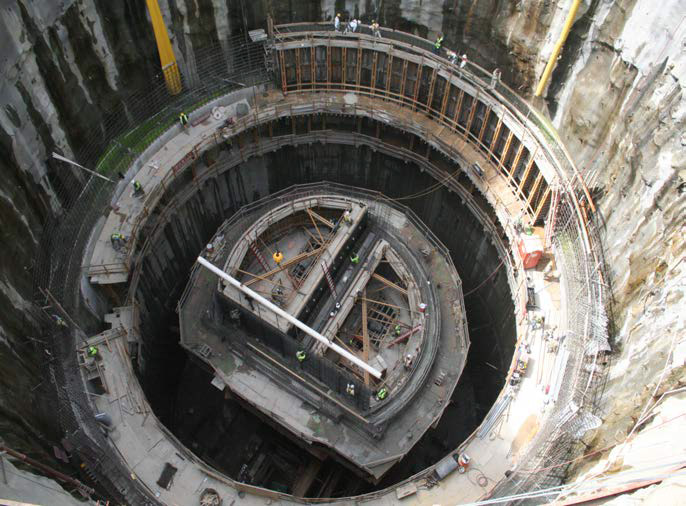
South Cobb Tunnel Lift Station
This structure is a 212-feet deep shaft that lifts sewage from over 32,000 LF of tunnels in Cobb County, GA. At these extraordinary depths, the design – a wet well within a dry well – required that the permeability of the concrete be extremely low to eliminate all concerns with leaking sewage from the wet well to the dry well (which is used by maintenance personnel). The ground water pressure at 212-feet elevations and the broken and shattered pieces of inconsistent bedrock were major waterproofing concerns. PENETRON ADMIX® was specified as the PRAH for this project; over 20,000 cubic yards were treated and successfully waterproofed.
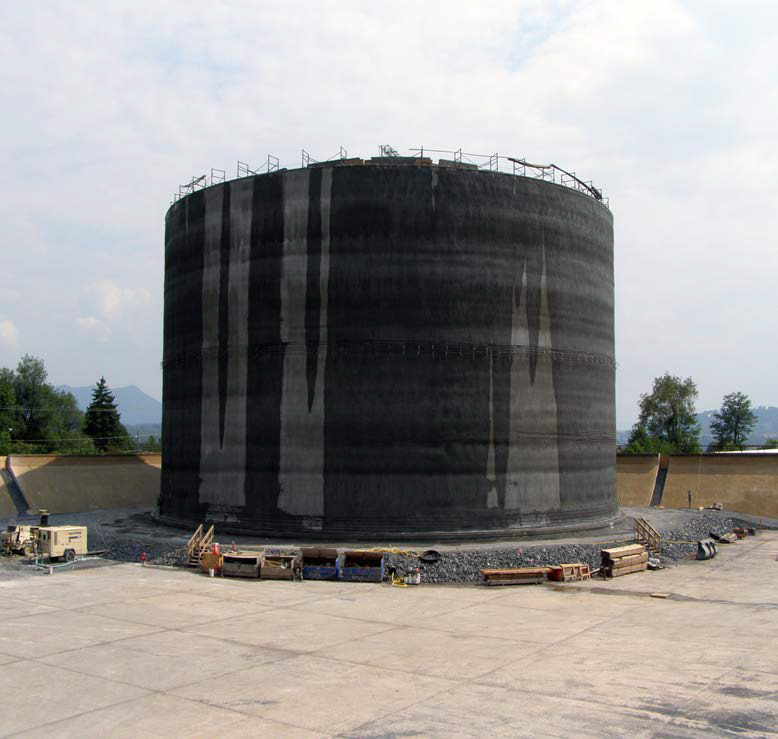
Tower Street Reservoir
Located in Harrisonburg, VA, this new eight-million gallon concrete water holding tank replaced a leaking in-ground concrete-lined reservoir. Built by the Crom Corporation, the new tank features the permeability-reducing benefits of PENETRON’s integral crystalline waterproofing technology. Construction of the new tank incorporated a PENETRON ADMIX® Enhanced Shotcrete (PAES) application to protect the reinforcing steel embedded in the concrete shell and to eliminate all leakage from the over 70-feet high structure. PENETRON ADMIX®’s ability to reduce concrete permeability under high hydrostatic conditions improved Harrisonburg’s water distribution system by eliminating water leakage..
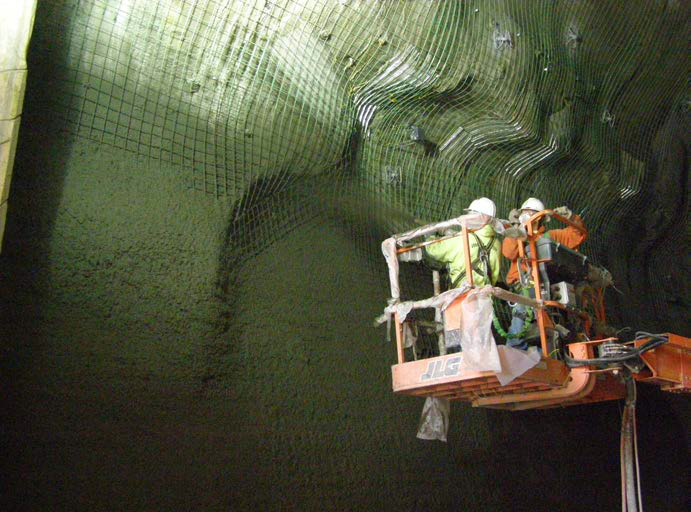
National Road Bikeway Tunnel Rehabilitation
Over 100 years old, the National Road Bikeway tunnel was plagued by groundwater infiltration and damage. First built in 1902 in an area of thinly bedded, faintly porous, weak shale with significant groundwater inflows, the main focus of the rehabilitation project was to control water infiltration and the subsequent ice build-up and damage. The ability of the PENETRON technology to reduce the permeability of the new shotcrete liner, even against high hydrostatic head pressure, exceeded the design team’s expectation. The ice and water infiltration problem was wholly eliminated.

Singapore Changi Airport /Terminal 3
More than an air transportation hub, the Changi Airport is a symbol of national pride and a benchmark for service excellence. Terminal 3 features innovative passenger facilities and modern architecture. 140,000 m³ of concrete was treated with PENETRON ADMIX®, along with PENETRON® slurry and PENECRETE MORTAR™.
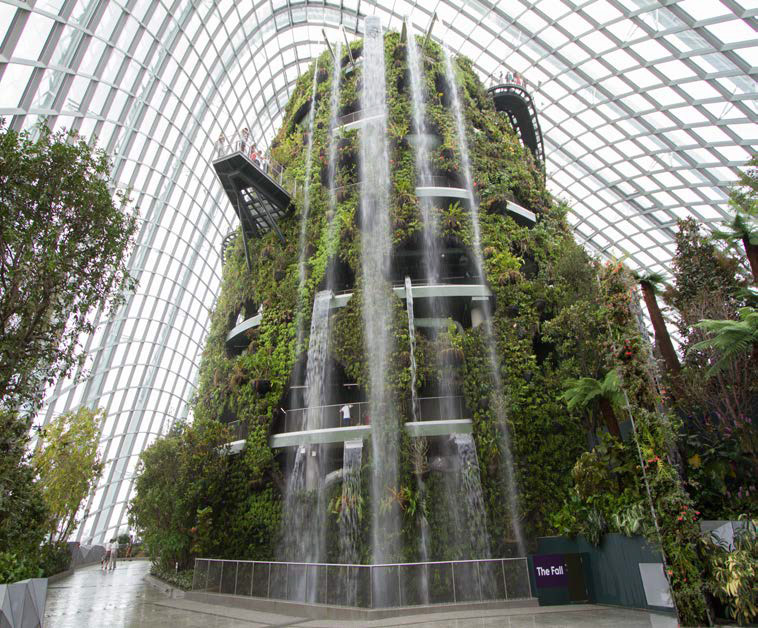
Gardens by the Bay, Marina Bay, Singapore
The distinctive waterfront gardens are an all-weather ‘edutainment’ space, an architectural icon, a horticultural attraction, and a showcase of sustainable energy technology – with large cooled conservatories replicating specific climates to house an uncommon range of flowers and plants. The project represented severe waterproofing challenges as it is built entirely on reclaimed land and right next to the ocean. 18,300 m³ of concrete were cast with PENETRON ADMIX® in the base slab and walls; PENEBAR™ SW-55 was used in the construction joints and PENESEAL PRO® on the mountain walls.
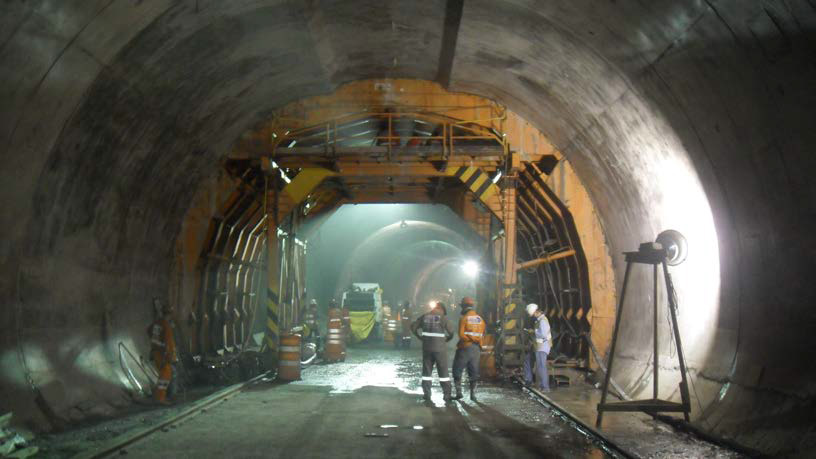
Corredor Duarte, Santo Domingo, Dominican Republic
The Corredor Duarte Tunnel, the newest tunnel in the Dominican Republic provides a rapid connection between Santo Domingo and the rest of the country. About 1,200 m (4,000 ft) in length, the tunnel plays a key role in relieving chronic traffic congestion in the capitol. A much thinner shotcrete layer was applied immediately behind the tunnel boring machine, creating a natural load-bearing ring and minimizing deformation of the surrounding layers of rock. PENETRON ADMIX® was used to reduce the permeability of the shotcrete walls. PENEBAR™ SW-55 was used to seal the concrete construction joints. In total, 45 tons of PENETRON ADMIX® and 2,300 meters of PENEBAR™ SW-55 were used.
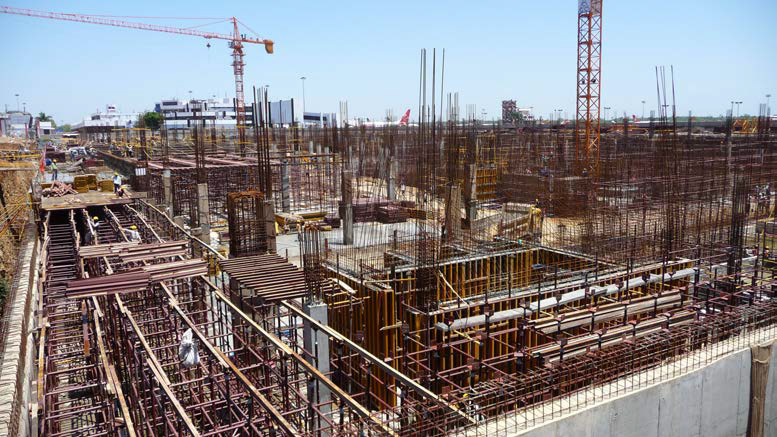
Chennai International Airport, India
Expanded and modernized to meet higher traffic demands, the Chennai International Airport expanded the international terminal, and added a new domestic passenger terminal, a multi-level car parking facility and a parallel runway to boost capacity to 16 million passengers a year. Located adjacent to the Bay of Bengal, the airport’s fluctuating ground water levels (-10 m in summer and -3 m during monsoon) demanded thorough waterproofing of all concrete structures and the concrete joints in the basement (10m deep). In total, 125 tons of PENETRON ADMIX® were used in the basement slabs and retaining walls; 15,000 meters of PENEBAR™ SW-45 swellable-type waterstops were used to prevent water ingress along the concrete joints.



